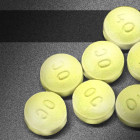
Hornberger Advice: Juvenile Offenders Need Alternatives to Prisons
|
Nancy Gannon Hornberger, executive director of the Coalition for Juvenile Justice (CJJ), says research shows that it is important to "keep the kids out of heavy duty lockup as much as possible." In this video interview conducted by Leonard Witt, she says "Reclaim Ohio" is a project that saves money and has better outcomes than the bars and chains approach. See subheads and time split guide below the video. Time splits to help guide you through the video:
Introduction 00:00
Conference theme: Developing sentencing alternatives to harsh punishment 00:30
Research shows that normal settings for sentences work best 01:20
Settings built on relationships is better than bars and chains 02:10
Reclaim Ohio is best practice example; cuts lockups and saves money 3:04



